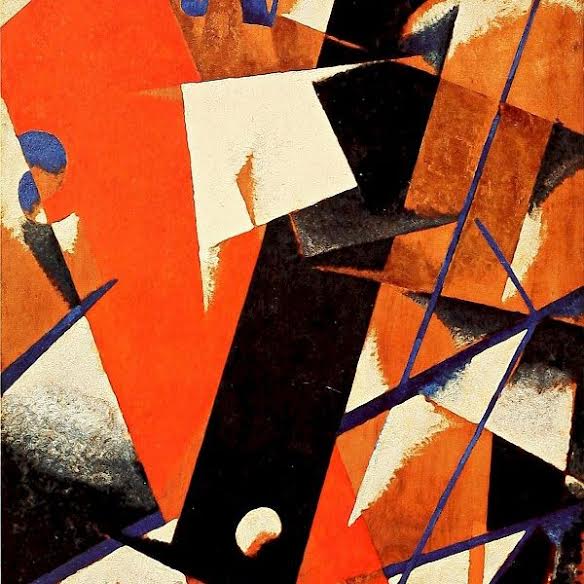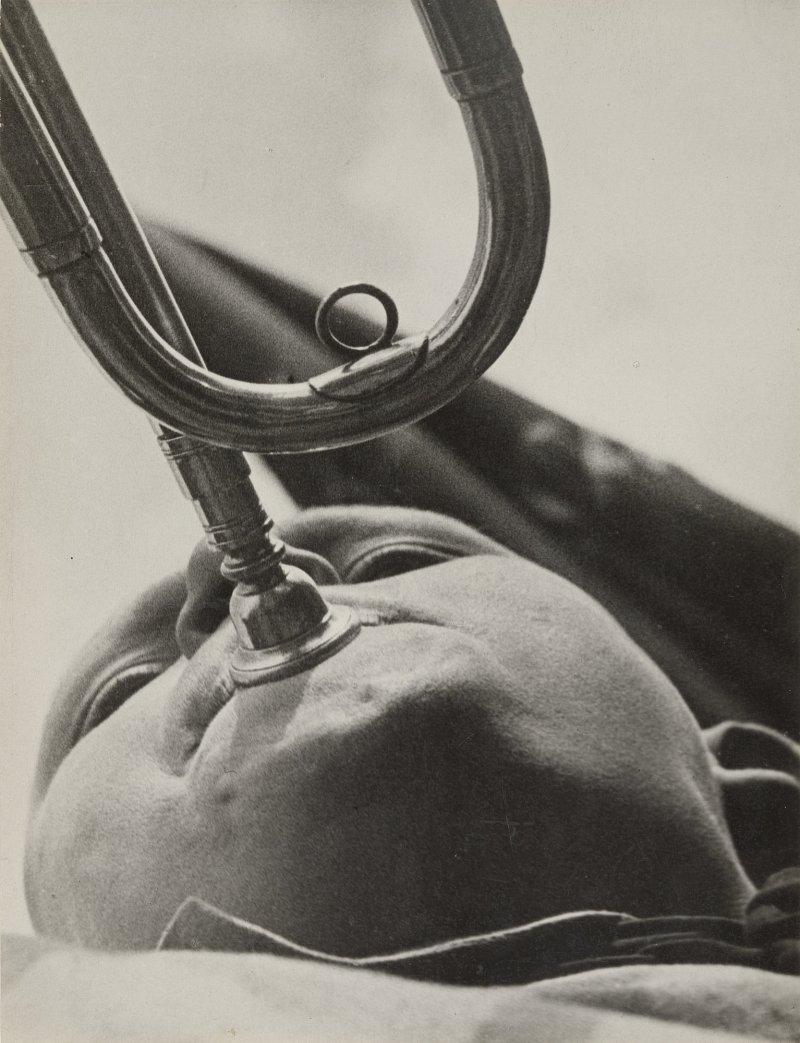-
International Conference: Art Born in the Revolution: Russian Art and the State 1917-1932

International Conference: Art Born in the Revolution: Russian Art and the State 1917-1932
With guest speakers including John Bowlt, Maria Gough, Christina Kiaer, Christina Lodder and Robert ServiceArt Born in the Revolution: Russian Art and the State 1917-1932
Day one: Courtauld Institute of Art – Friday 24 February, 14:00-18:45. Book tickets
Day two: Royal Academy of Arts – Saturday 25 February, 10:30-18:30. Book ticketsThe Royal Academy of Arts, in association with the Courtauld Institute of Art, presents a two-day academic conference to coincide with the exhibition Revolution: Russian Art 1917–1932 for scholars, students and those interested in the period.
Turned overnight into the ruling party, the Bolsheviks aimed to use the power of mass propaganda in order to establish their founding mythology and disseminate their ideas to an overwhelmingly rural and illiterate population. In 1917 the leader of the new Bolshevik state, Vladimir Lenin, proclaimed that culture should support political needs.
The first day of the conference is held at the Courtauld Institute of Art and aims to address the question of how useful visual art was to the revolution, as well as the ways in which cinema, printed media and consumer goods were used for propaganda purposes. The second day considers the death and immortalisation of key revolutionary figures, such as Lenin, and the consequent establishment of autocratic rule under Stalin, alongside the impact that social, political and economic developments had on the visual arts and culture.
Organised by Dr Natalia Murray, the Courtauld Institute of Art. Full conference programme below. Please note that each day requires a separate booking.
Day one: Friday 24 February 2017 - The Courtauld Institute of Art
2pm – 6.45pm (registration from 1.30pm)
Tickets £16 (£11 concession)
Kenneth Clark Lecture Theatre, The Courtauld Institute of Art, Somerset House, WC2R 0RNDay two: Saturday 25 February 2017 - The Royal Academy of Arts
10.30am – 6.30pm (registration from 10am)
Tickets £50 (including entry into the exhibition, refreshments and drinks)
Reynolds Room, Royal Academy of Arts, Burlington House, Piccadilly, Mayfair, W1J 0BD -
Exhibition: A Revolutionary Impulse: The Rise of the Russian Avant-Garde at MoMA

Exhibition: A Revolutionary Impulse: The Rise of the Russian Avant-Garde at MoMA
On December 3, 2016, the exhibition “A Revolutionary Impulse: The Rise of the Russian Avant-Garde” opened at The Museum of Modern Art, New York; it will be on view until 12 March 2017. The exhibition traces the arc of the pioneering Russian avant-garde from its earliest flowering in 1912 to the moment of the Stalinist decree in 1934. Bringing together almost 300 breakthrough objects across mediums from MoMA’s extraordinary collection, the exhibition, planned in anticipation of the centennial of the Russian Revolution, probes the myriad ways that an object can be revolutionary.
The exhibition will be complemented by a public program “The Russian Avant-Garde: Scholars Respond” on February 8, 2017 from 6-8pm. Admission is free but a reservation is required.
-
CFP: The Royal Palace in the Europe of Revolutions (Paris, January 2017)
CFP: The Royal Palace in the Europe of Revolutions (Paris, January 2017)
Deadline: Aug 31, 2016The Royal Palace in the Europe of Revolutions
International symposium organized by Basile Baudez and Adrián Almoguera
Centre André Chastel, Paris
January 2017Conference languages: English, French, Italian
Since the publication of Nikolaus Pevsner’s History of Building Types in 1976, architectural historians have been alert to the importance of typologies for rethinking their discipline. As analyzed by Werner Szambien or Jacques Lucan, thinking through types allowed for the articulation of concepts of convenance, character and composition in both public and private commissions. Along with metropolitan churches and royal basilicas, in ancien régime Europe princely palaces represented the most prestigious program an architect could expect. For a period in which the divine right of kings was being called into question, however, what happened to the physical structures of royal or princely power, symbol of political authority and dynastic seats? Did the national models of the Escorial, Versailles, Het Loo or Saint James palaces still hold, even in light of new models made available through the publication of archeological discoveries in Rome or Split? The second half of the eighteenth and first half of the nineteenth century represent a moment of intense construction or reconstruction of the principal European palaces, from Caserta to Buckingham Palace, Saint-Petersburg to Lisbon, Versailles to Coblenz. This trend, addressed by Percier and Fontaine in their Résidences des souverains de France, d’Allemagne, de Russie, etc. (1833), took place in a Europe that was undergoing political developments that altogether changed the nature and symbolic structure of princely power.
This symposium, focused on Europe from roughly 1750 to 1850, aims to interrogate the manner in which architects and their patrons integrated the changing concepts of character in architecture and symbolic place of dynastic palaces, reconciling them with theory and/or practice through rethinking issues of distribution, construction, environmental situation, décor, function, reuse of interpretations of printed or drawn sources.
Submissions of 500 words (maximum) should be sent to
basile.baudez@gmail.com and af.almoguera@gmail.com -
CFP: Interdisciplinary conference: Hungary 1956 – 2016 – Reverberations of a Revolution
CFP: Interdisciplinary conference: Hungary 1956 – 2016 – Reverberations of a Revolution
60 years ago a student demonstration in pursuit of liberty and democratic reforms in Hungary started a chain of events that turned into a nationwide revolt against the Soviet policies and control embodied in the government of the Hungarian People’s Republic. The uprising that caught the attention and imagination of the world has been widely considered as the first major threat to Soviet control in Central Europe. Although the revolution failed at the time, its reverberations have been felt ever since, particularly in what is now considered the democratic transition in Central Europe, and the lives of diaspora communities around the world.
This interdisciplinary conference seeks to bring together scholars from any discipline in the social sciences, humanities and fine arts, who are interested in exploring the general theme of Hungary 60 years after the revolution. The organizers welcome academic papers that address social, political, cultural, historical and economic issues in contemporary Hungary, in particular those that investigate how such issues have been shaped or affected by the realities and/or the collective memory of the 1956 revolution.
Questions to consider are many; some of the suggested topics of inquiry include:
- education and educational reform(s)
- women and politics, the role of women in Hungarian society
- gender and cultural politics
- NGOs, civil society and democratization
- minority issues, policies and politics of diversity - national identity, identity and culture, religious identity
- national identity and the politics of memory and commemoration
- refugee and diaspora memories
- citizenship and identity - architecture, space and memory, remembering through space
- street names and their meaning in national collective memory
- Art and remembering
- Hungarian media today, media and society, social media and civic engagement
- political engagement of youth
- sports
- crime and the criminal justice system
- international relations and Hungary’s place in the world (perceived and actual)
We encourage presentations from all disciplines and fields of scholarship, including History, Political Science, Literature, Economics, Pedagogy, Art History, Religious Studies, Gender Studies, etc. We are inviting submissions for both individual papers and pre-constituted panels for presentations. Abstracts should be a maximum of 250 words in length. In addition, please include a short biographical note (approximately 100 words). Presentations should be no more than 20 min in length. Selected papers will have the opportunity to be published. We welcome submissions from graduate students and early career scholars.
Please note that travel and accommodation subsidies are available to participants of this conference. Please notify us of your intention to request a travel subsidy in your submission.
Deadline for abstracts: May 1st, 2016
Notification of acceptance: on or around June 1st, 2016Send in your submissions to: hungaryconference@gmail.com
The conference will take place at the University of Alberta in Edmonton, Canada on October 27-28, 2016. Please note the language of the conference is English and we ask that you submit your abstract and bio in English.
News tagged: